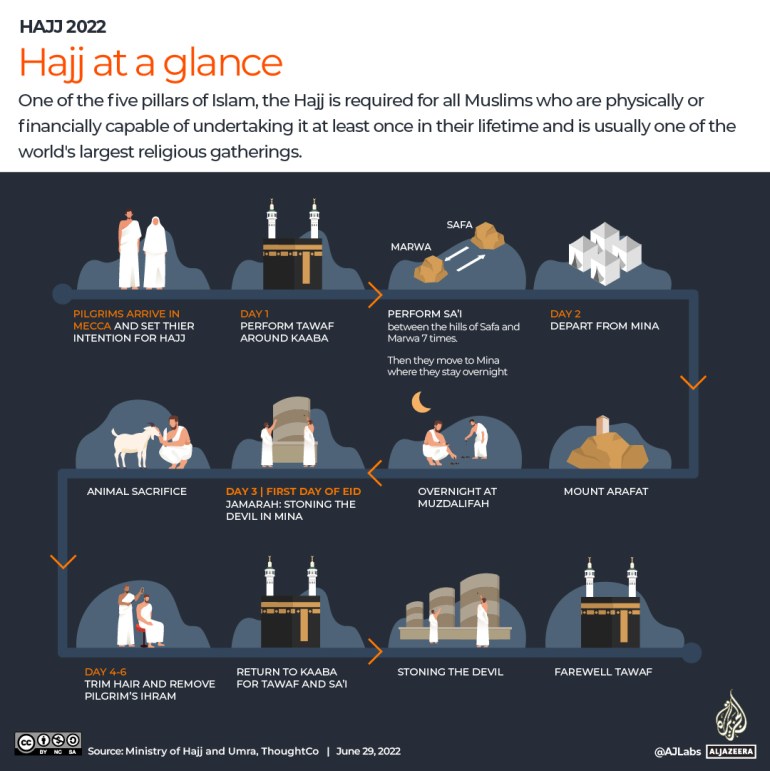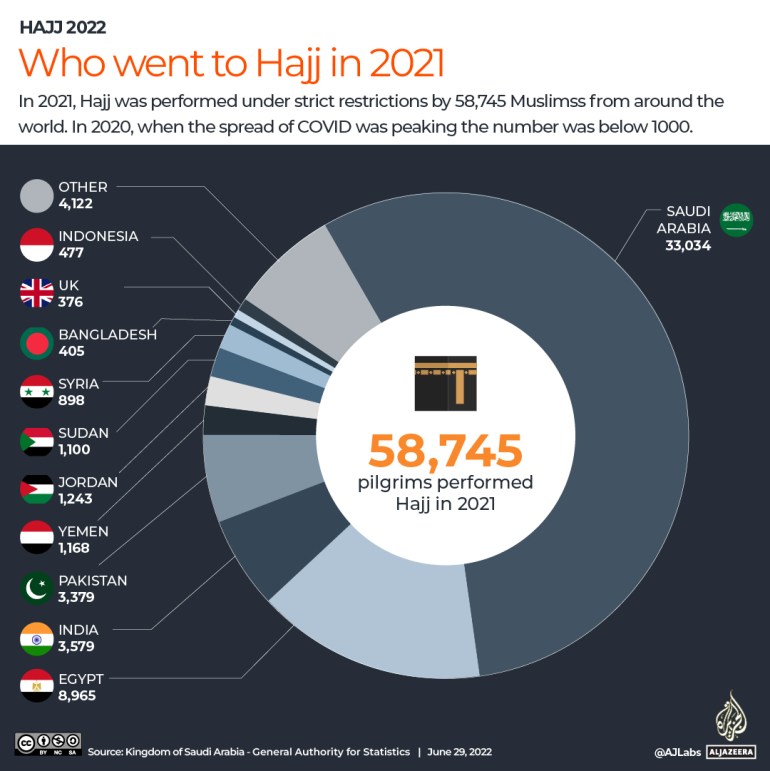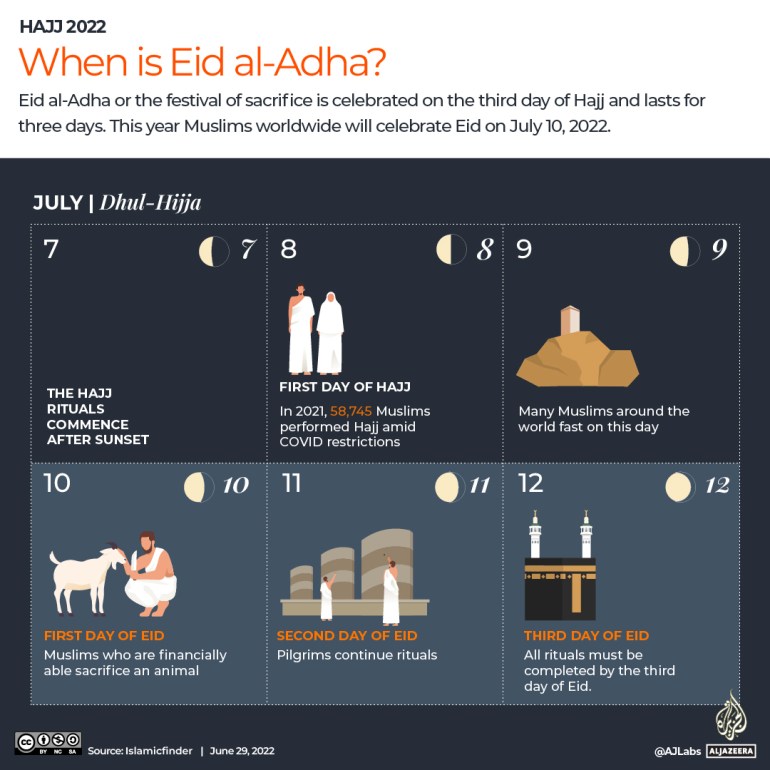When is Hajj?
Hajj is the largest annual religious gathering of Muslims. It takes place in the Islamic month of Dhul-Hijja, in and around the holy city of Mecca in Saudi Arabia.
This year, Hajj starts on July 7, 2022, depending on the sighting of the moon, and Eid al-Adha will be three days later, on July 10.
Hajj is one of the five pillars of Islam and all financially and physically able Muslims are required to perform it once in their lives. It is meant to cleanse followers of sin and bring them closer to God.

How is Hajj performed?
The pilgrims arrive in Mecca on the 7th of Dhul-Hijja, and set their intention to perform Hajj. They are required to enter Mecca in a state of ihram. For men, this means being clothed in seamless white cloth only, with one piece wrapped around the waist and another draped over the shoulder. Women can wear any plain clothing of their choice but should observe the rules of hijab and cannot cover their faces.
On the first day of Hajj, the pilgrims will perform tawaf, which refers to walking around the Kaaba seven times, intended to bring the pilgrim spiritually closer to God. Then comes the sai – walking or running seven times between the two hills of Safa and Marwa, to commemorate the actions of Hajar the wife of Prophet Ibrahim, who walked between the hills of Safa and Marwa seven times in search of water for her son Ismail.
From here, the pilgrims will be transported to the tent city of Mina, which lies roughly eight kilometres (4.9 miles) away from Mecca, where they spend the night in prayer.
On the second day, the pilgrims head towards Mount Arafat, where they will pray for their sins to be forgiven. They are then transported to the plains of Muzdalifa, spending another night in the open air for worship.
On the third day, the pilgrims return to Mina for the stoning of the Jamarat – the three stone structures that represent the devil – as well as sacrificing an animal. For other Muslims around the world, this is the first day of Eid. Following the sacrifice, the pilgrims proceed to shave or trim their hair.
In the following days, the pilgrims will perform tawaf and sai again in Mecca and then go back to stone the three Jamarats.
Before leaving Mecca, all pilgrims have to do one last tawaf to complete their Hajj.
We take a look at the process in the infographic below.

Hajj is the largest Muslim gathering in the world. Prior to the COVID-19 pandemic, more than two million people on average entered Mecca for the pilgrimage each year.
During the pandemic, sites in Mecca were closed to international pilgrims. In 2021, amid COVID restrictions, only 58,745 pilgrims performed Hajj.
In April 2022, Saudi Arabia said it would allow one million people – from within and outside the kingdom – to perform the Hajj this year.
The kingdom’s Ministry of Hajj and Umrah said Hajj would only be open for people who have been fully vaccinated against COVID-19 and are under the age of 65.

When is Eid ul Adha?
Eid al-Adha, or the Feast of the Sacrifice, is celebrated on the third day of Hajj and lasts for three days. It is the second major Muslim festival in the Islamic calendar after Eid al-Fitr, which marks the end of Ramadan, the month of fasting.
On the first day of Eid al-Adha, Muslims who can afford it are required to sacrifice an animal and distribute a set percentage of its meat to those less fortunate. This is done in symbolic remembrance of the Prophet Ibrahim, who in Islamic tradition, was asked to sacrifice his son Ismail by God.
Hajj falls on the 8th of Dhul-Hijja, the twelfth and final month in the Islamic lunar calendar, which shifts 10 to 12 days earlier each year.

Post a Comment